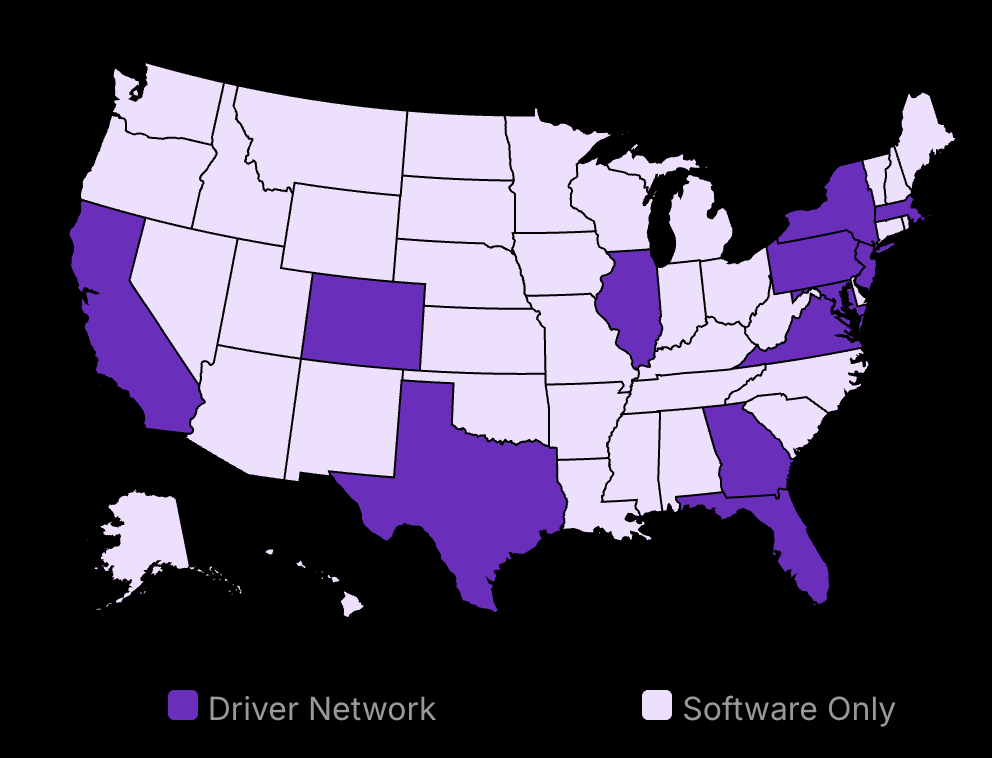Effective employee training is crucial for the growth and success of small businesses. For small business owners, finding affordable and efficient ways to train employees while keeping costs down can be a challenge. Whether you’re looking to enhance your training program, boost employee morale, or develop new skills among your team, a well-structured training plan is key.
In today’s competitive business environment, investing in small business employee training not only helps in developing soft skills and technical skills but also ensures that new hires are well-integrated into your work environment. Training employees through cost-effective methods can be achieved by leveraging online courses, cross-training, and utilizing existing talent within the company.
Small businesses can benefit significantly from using a learning management system to streamline training processes and track progress. Management training and mentoring from senior employees can also play a vital role in building a strong foundation for employee development. By focusing on these strategies, small business owners can create successful training programs that meet the needs of their workforce and prepare them for future challenges.
In this article, we’ll explore various affordable training strategies that can help small businesses enhance their employee training programs, foster a collaborative work environment, and ensure that their teams are well-prepared to handle daily tasks and future opportunities. From utilizing online training tools to implementing effective cross-training practices, discover how to maximize your training efforts and achieve lasting success for your business.

Save 80% of delivery management time
We handle everything:
- Dedicated operations manager
- Real-time tracking dashboard
- Automated customer notifications
- Urgent issue resolution
Leverage Internal Resources and Knowledge Sharing
1. Identify Experienced Employees

Experienced employees are invaluable resources for training and knowledge transfer within a business. By utilizing their expertise, small business owners can foster a culture of learning and ensure that essential skills and insights are passed on effectively. This approach not only enhances employee skills but also promotes a collaborative work environment.
The following suggestions can help enhance knowledge sharing:
Encourage senior employees to act as mentors or trainers for new employees.
Create regular training sessions led by experienced workers to cover essential business tasks.
Recognize and reward employees who consistently contribute to training and mentoring.
Tip: Designate specific time slots for experienced employees to lead workshops or one-on-one sessions with new hires. This structured approach ensures that knowledge transfer is consistent and that experienced employees have dedicated time to share their expertise.
2. Establish Mentorship Programs
Mentorship programs are a powerful way to ensure that experienced employees can guide and support newer team members. These programs help integrate new hires more effectively and provide a structured pathway for skill development and career growth. Mentorship also strengthens team bonds and fosters a supportive workplace culture.
The following suggestions can enhance your mentorship program:
Set up formal mentorship relationships between experienced employees and new hires.
Provide mentors with clear goals and resources to effectively guide their mentees.
Regularly review the progress and impact of mentorship relationships to ensure effectiveness.
Tip: Use a mentorship management platform to match mentors with mentees based on skills and development needs. This can streamline the process and provide a central place for tracking progress and feedback.
3. Implement Cross-Training

Cross-training enables employees to learn various roles within the company, which enhances flexibility and ensures that all critical tasks are covered. This method not only helps employees acquire new skills but also prepares them to handle different responsibilities, improving overall business resilience and employee satisfaction.
The following suggestions can help with cross-training:
-
Develop a cross-training plan that rotates employees through different roles.
-
Encourage employees to teach each other key job functions, which fosters teamwork and skill-sharing.
-
Track and evaluate the effectiveness of cross-training efforts to ensure they meet business needs.
Tip: Create a cross-training schedule with clear milestones and feedback sessions. This approach helps monitor progress, addresses any issues promptly, and ensures that the training aligns with business needs.
Embrace Online Learning Platforms
4. Utilize Online Learning Platforms
Online learning platforms offer affordable and flexible training options that can be tailored to the specific needs of your business. By leveraging platforms like Udemy, Coursera, and LinkedIn Learning, small business owners can provide employees with access to a wide range of courses and professional development opportunities without significant financial investment.
The following suggestions can help you make the most of online learning:
-
Select courses that align with your employees’ roles and development goals.
-
Encourage employees to take advantage of flexible learning schedules to fit their needs.
-
Regularly review and update the list of recommended courses to ensure relevance and quality.
Tip: Create a curated list of recommended courses with descriptions and align them with your team’s skills gaps. For technical roles, consider including IT certifications to ensure employees gain relevant, in-demand skills. Share this list regularly and offer incentives for completing courses to motivate employees.
5. Focus on Microlearning Courses
Microlearning involves delivering content in small, focused segments that target specific learning objectives. This method is particularly effective for small businesses as it provides employees with quick, actionable training that fits easily into their busy schedules. Microlearning helps maintain engagement and ensures that training is relevant and immediately applicable. As businesses increasingly rely on digital tools, such as Microsoft 365, for online meetings and work, it’s essential to provide employees with training on these platforms. To enhance productivity and efficiency, consider providing resources like MS-102 exam dumps, which can help employees develop a deeper understanding of Microsoft 365 administration and its applications.
The following suggestions can help implement microlearning:
-
Create short, targeted learning modules that address specific skills or knowledge areas.
-
Integrate microlearning into daily workflows to reinforce learning and application.
-
Use interactive content and assessments to keep employees engaged and measure progress.
Tip: Develop a library of microlearning modules that employees can access on-demand. Incorporate quizzes and interactive elements to reinforce learning and provide immediate feedback.
Utilize Remote Small Business Employee Training Methods
6. Leverage Video Conferencing for Training

Video conferencing tools provide a cost-effective way to deliver training sessions to employees regardless of their location. By using platforms like Zoom or Microsoft Teams, small businesses can conduct interactive training sessions that are accessible to all team members, helping to overcome geographical barriers and reduce training costs.
The following suggestions can enhance remote training:
Schedule regular virtual training sessions to accommodate different time zones and work schedules.
Utilize features like screen sharing and breakout rooms to facilitate interactive learning.
Record sessions for later review and to provide additional resources for employees.
Tip: Create a virtual training calendar and share it with your team to ensure they are aware of upcoming sessions. Use polls and surveys to gather feedback and continuously improve the training experience.
7. Implement Remote Conferencing for Hybrid Workforces
For businesses with hybrid teams, remote conferencing is essential to ensure that all employees receive consistent training. By leveraging remote conferencing technology, you can provide effective training to team members who work both in the office and remotely, ensuring that everyone benefits from the same opportunities for growth.
The following suggestions can help with remote conferencing:
Set up recurring training sessions that cater to both in-office and remote employees.
Encourage active participation through interactive elements like polls and Q&A sessions.
Provide ongoing support and resources to help employees apply what they’ve learned.
Tip: Develop a hybrid training strategy that includes both virtual and in-person components. Use collaborative tools and group activities to engage both remote and in-office employees equally.
Implement Low-Cost Training Strategies
8. Host Weekly Brown-Bag Lunches
Weekly brown-bag lunches offer an informal setting for employees to share knowledge and discuss various business topics. This low-cost approach not only encourages knowledge sharing but also promotes a sense of community within the workplace. It provides an opportunity for employees to learn from each other and stay informed about different aspects of the business. Facing challenges with high staff turnover at small businesses? Discover how weekly brown-bag lunches can reduce employee turnover by fostering a community and encouraging knowledge exchange.
The following suggestions can make brown-bag lunches effective:
Invite employees to present on topics related to their expertise or current projects.
Encourage open discussions and idea sharing during lunch sessions.
Rotate topics and presenters to keep the sessions engaging and diverse.
Tip: Use a sign-up sheet for employees to choose topics and presentation dates. This approach helps keep the sessions organized and ensures a variety of perspectives are covered.
9. Book Club Discussions
Creating a company book club where employees read and discuss business-related books is a cost-effective way to promote professional development. This method not only helps employees gain new insights but also encourages teamwork and communication. By discussing relevant books, employees can share perspectives and apply new ideas to their roles.
The following suggestions can help implement a successful book club:
Choose books that align with your business goals and employee interests.
Schedule monthly meetings to discuss key takeaways and their applicability to work.
Encourage employees to lead discussions and share their insights.
Tip: Set up a book club committee to select books and organize meetings. Rotate the leadership role among employees to build engagement and ownership.
10. Encourage Industry Conference Attendance
Industry conferences and seminars offer valuable learning and networking opportunities. By encouraging employees to attend these events, small businesses can help them stay updated on industry trends and best practices. Supporting attendance at such events can lead to professional growth and bring fresh ideas back to the company.
The following suggestions can maximize the benefits of conference attendance:
Provide information on relevant industry events and offer support for attendance.
Encourage employees to share key takeaways and insights with the team.
Consider sponsoring attendance for conferences that align with company goals.
Tip: Set up a debrief session after conferences where attendees can present their insights and share valuable information with the rest of the team.
11. Utilize Free or Low-Cost Webinars
Free or low-cost webinars are a practical way to provide training without a significant financial investment. Many industry associations and organizations offer valuable webinars that cover a range of topics. By taking advantage of these resources, small businesses can offer employees access to high-quality training at minimal cost.
The following suggestions can help you make the most of webinars:
Regularly review available webinars and select those relevant to your team’s needs.
Encourage employees to participate and apply the knowledge gained from these sessions.
Follow up with discussions or additional resources to reinforce learning.
Tip: Create a centralized repository for webinar links and summaries, and encourage employees to share their key takeaways with the team.
12. Develop In-House Training Programs

Developing in-house training programs allows small businesses to tailor training to their specific needs and culture. By using top performers as trainers, you can ensure that the training is relevant and directly applicable to your business. This method also helps build leadership skills among your best employees.
The following suggestions can help create effective in-house training programs:
Identify top performers who can lead training sessions on key topics.
Develop training materials and schedules that align with company goals.
Collect feedback from participants to continually improve the training program.
Tip: Establish a feedback loop where employees can provide input on the training sessions. Use this feedback to refine the content and delivery methods for greater impact.
13. Select Training Methods Wisely
Choosing the right training methods is crucial for achieving successful outcomes. Small business owners should consider factors such as employee needs, available resources, and the nature of the training content when selecting methods. By tailoring the training approach, you can maximize effectiveness and ensure that employees gain valuable skills.
The following suggestions can guide your method selection:
Assess training needs and choose between options like e-learning, workshops, or mentorship.
Align training methods with your business goals and available resources.
Regularly evaluate the impact of training methods to ensure they meet your objectives.
Tip: Conduct a training needs assessment survey to gather input from employees about their preferred learning styles and topics. Use this data to customize your training methods and ensure they are relevant and effective.
Investing in Affordable Employee Training for Long-Term Success
Incorporating affordable employee training strategies is essential for small businesses aiming to cultivate a skilled and motivated workforce. By focusing on cost-effective methods such as online training, cross-training, and leveraging the expertise of senior employees, small business owners can develop comprehensive training programs that enhance employee skills and morale. Looking to elevate your team’s capabilities without breaking the bank? Discover how refining the hiring and training processes can benefit small businesses.
Additionally, small businesses should consider the potential financial benefits available through government programs. For example, exploring options like Employee Retention Credits can help offset the costs of training and retention, further supporting the growth of a skilled workforce.
Successful training not only equips employees with new skills but also fosters a positive work environment, promotes teamwork, and supports ongoing development. Whether you’re training new hires or enhancing the capabilities of existing staff, investing in a well-rounded training plan is crucial for achieving long-term success and ensuring that your business can adapt to future challenges. One effective way to assess the impact of these training efforts is through regular employee evaluations. Utilizing a comprehensive approach for evaluations can provide honest feedback that helps shape future training initiatives. For detailed guidance on crafting an effective evaluation form, check out this insightful resource on the best employee evaluation form.
By implementing these affordable training tips and utilizing available tools and resources, you can build a robust training program that drives growth, improves performance, and supports the overall success of your business. Embrace these strategies to create a thriving workplace where employees can excel and contribute to your company’s achievements. Another essential aspect to consider in enhancing workplace efficiency is optimizing scheduling processes. One effective solution is to implement a streamlined system for managing employee requests for time off. A well-designed time off request form can simplify the process, ensuring that employee absences are handled efficiently and reducing scheduling conflicts.
Additionally, adopting a structured approach to managing vacation and leave requests can significantly enhance operational efficiency within your team. Implementing a user-friendly time off request form can streamline the submission and approval processes, leading to fewer misunderstandings and improved workforce planning.






























